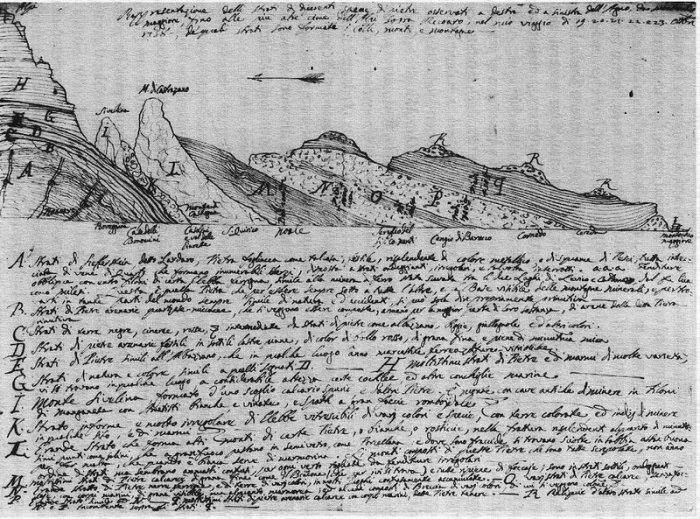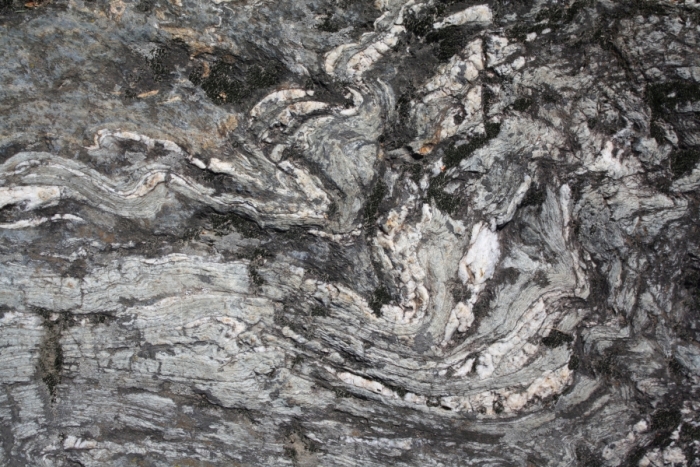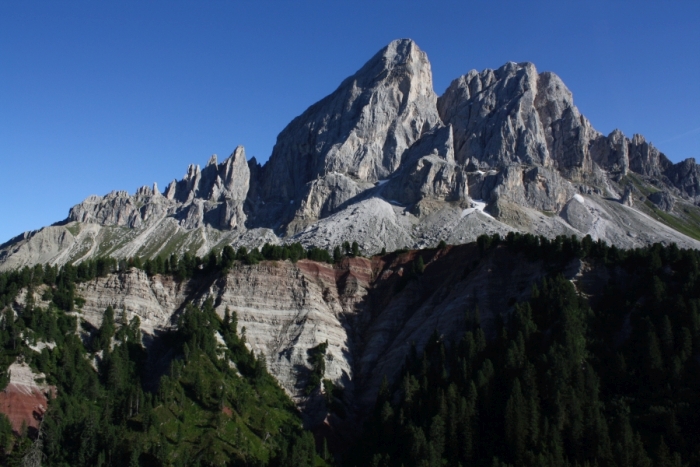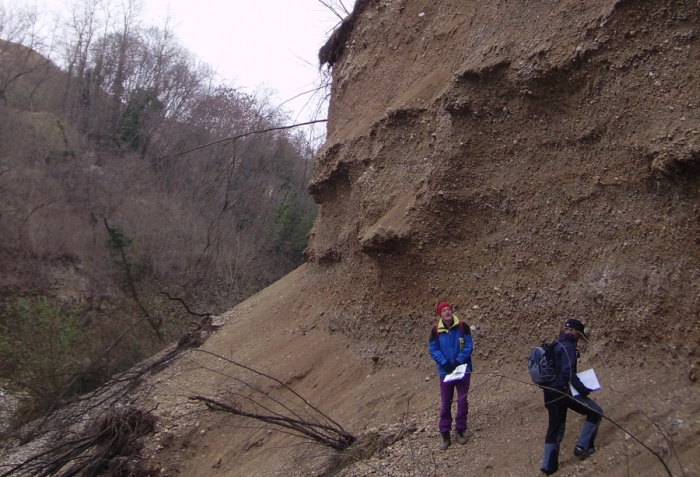
» [I worked] still young in the mines of Klausen and elsewhere in Tyrol, in order to learn Metallurgy; I went there by chance, and I was urged to stay by my natural very strong inclination for the universal Mineralogy, and for all the matters concerning the Science of the Fossil Kingdom. «
Venetian scientist Giovanni Arduino worked at an early age as a mining assistant in the iron mines of Klausen in South Tyrol.
Italian mining engineer Giovanni Arduino (1714-1795) is considered nowadays the spiritual father of the modern chronostratigraphic chart. Based on his observations in the Venetian Dolomites and Tuscany in 1759 Arduino proposed „a series of layers forming the visible crust of earth … “ subdivided „in four generalized units following each other.“ He named them primary, secondary, tertiary, and quaternary, speculating that they formed at various times and under different environments.

- Primary Layer: Pebbles formed by the erosion of underlying “primitive or primeval” – considered to be the earliest – rocks. Fossils were rare, if not absent. This unit includes unstratified or poorly stratified rocks, like porphyry, granite and schist, of the crystalline basement of the Dolomites. Arduino’s rock unit survives into modern chronostratigraphic charts as the Paleozoic Era (rocks older than 252 million years) and Precambrian Eon (541 million years to about 4.6 billion years ago).

- Secondary Layer: A well-stratified succession of marl- and calcareous rocks with marine fossils, making up the characteristic peaks of the Dolomites. In 1841, English geologist John Phillips, based on the correlation of fossils in rock strata worldwide, renamed this sedimentary succession the Mesozoic Era (252 to 66 million years ago).

- Tertiary Layer: Poorly consolidated sediments like gravel, clay, fossiliferous sand, and also younger volcanic rocks. Our modern Cenozoic Era (66 to 2 million years ago).

- Quaternary Layers: Unconsolidated sediments found in valleys. Our modern Quaternary Period (2 million years ago to modern age).